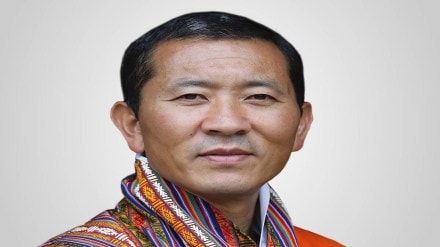Among all its South Asian neighbours, India has the best relations with the Himalayan kingdom of Bhutan. India is its top trade partner both as an import source and as an export destination, accounting for two-thirds of Bhutan’s overall trade in Q1 2023. India accounts for half of the foreign direct investments into the Himalayan kingdom. The key pillar in bilateral cooperation is hydropower. Bhutan (like Nepal) generates hydropower in excess of its domestic requirements, the bulk of which is exported to India. Hydropower contributes 30-40% to its exchequer and one-third of its GDP. For all these reasons, Bhutan has perhaps the biggest stakes in the India growth story, a point that was forcefully reiterated by its prime minister Lotay Tshering in an interview with this newspaper. Bhutan is ready offer investment incentives to global companies with a presence in India to extend their operations to the kingdom. “We might be able to offer some unique advantages, maybe in terms of tax, maybe in terms of manpower , maybe in terms of specific skills, so that companies can have a chapter in Bhutan too” stated Tshering.
The kingdom is keen to diversify its economy away from hydropower, forestry and agriculture and attract manufacturing especially in niche areas that require skilled labour. It has a thriving tourism industry but its hefty levy of $200 per person per day (which has since been halved) is a hurdle in getting tourists back to the mountainous country at a time of slow global growth. As a result, its growth outlook is expected to remain subdued in 2023-24 (July-June). Bhutan is therefore keen to attract FDI to bolster its overall growth, especially when the country is on the verge of graduating from UN’s Least Developed Country status to a developing country in December. In Bhutan, over 50% of its workforce is in agriculture and a third is in low value-added services. For a more sustainable transition to developing country status, it needs to shift its workforce away from low productivity, small farm-driven agriculture by generating more employment opportunities in industry and information and communications technology and other services. This is the pathway to modern economic development.
An added compulsion is that unemployment among its youth is as high as 29% in 2022. However, graduation to a developing country has its benefits as it entails acquiring a global seal of approval with better prospects of getting FDI—with India’s help as sought by Tshering—better credit ratings and lower costs of international borrowings. India can also step up its FDI in the Himalayan kingdom to more than the $86 million it has cumulatively invested from April 2000 to March 2023. India, for its part, is also committed to strengthening cooperation on skill development and new areas of partnership in start-ups, space and STEM education.
Land-locked Bhutan can leverage the India growth story if it also gets better road- and rail-linkages, inland waterways and border-crossing facilities. Four years ago, a Bhutanese cargo of stone aggregates reached Bangladesh on an Indian vessel on the Brahmaputra river. Better connectivity promotes greater trade not just with India but also provides access to global markets. India has been pushing for better connectivity with Nepal, Bangladesh and Sri Lanka, which also must develop greater stakes in its rise as one of the fastest-growing economies in the world.
